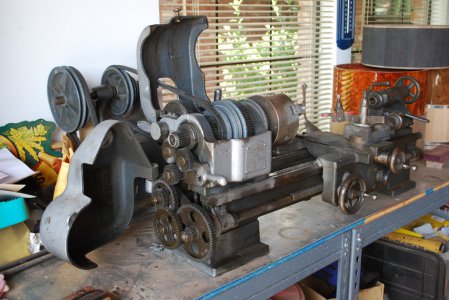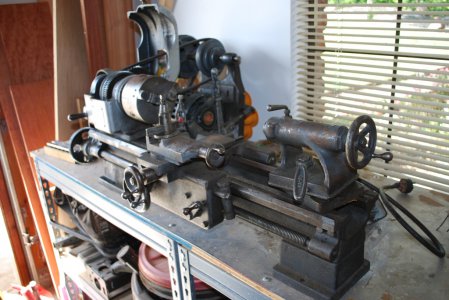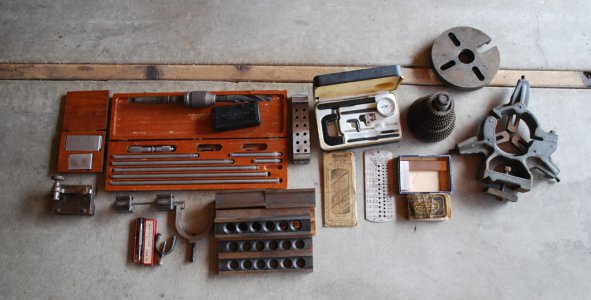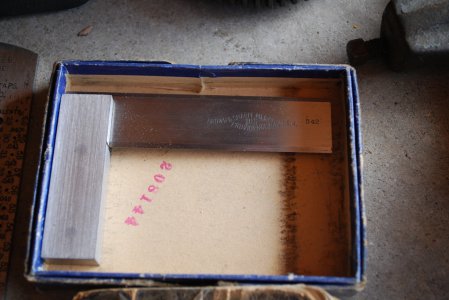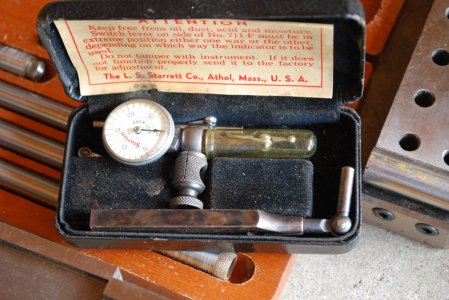Drive dogs?? Why, they drive you down to the local beer joint so you can live it up for a while, then drive you home again!!! Just kidding, obviously!!
Drive dogs are used when you are turning a piece between centers, so the set up would be as follows:
1. Center drill both ends of shaft to be turned.
2. Install faceplate on spindle
3. Install #3 morse taper dead center in spindle (or you could put in a #3 to #2 sleeve first, then place a #2 morse taper dead center inside of the sleeve). (Since this center is powered, it is sometimes called a "live center").
4. Install a #2 morse taper dead center or ball bearing dead center in the tailstock.
5. Place drive dog onto shaft to be turned, with bent leg pointing toward headstock. Dog can be left loose for now.
6. Place shaft between centers on the lathe, tighten the tailstock up to properly support the shaft
7. Position drive dog on shaft so that bent leg is sticking into slot in faceplate, then tighten the set screw so that dog is locked in place. Optionally, you can place a piece of leather or even brass sheet stock between the setscrew and the work piece.
I was going to set up a piece in my lathe for a quick photo, but realized that its faster just to go to Google images and do a quick search on "lathe drive dog" - you'll get plenty of examples.
ON EDIT: I have seen pics of setups where the work was mounted in a chuck, but a drive dog was also used with the bent leg resting against one of the chuck jaws. I have never done such a setup, and fail to see the need to ever use a drive dog with a chuck, but it is possible that I missed something long ago and someone else could enlighten us all. The only reason I can think of is to be sure that the work piece does not slip in the chuck jaws. My thought on that is simple: if you are taking a cut so heavy that the work can slip in the chuck, you are taking too heavy a cut!!
